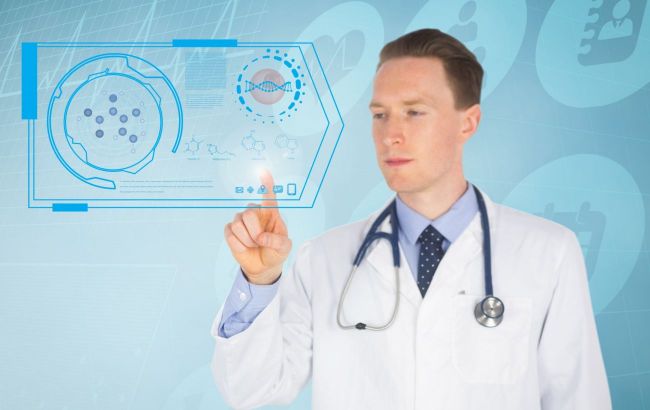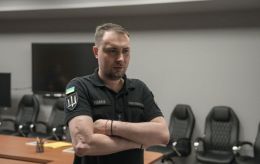5 reasons why robots could become best doctors of future
 Ways that robotics is transforming healthcare (illustrative photo: Freepik)
Ways that robotics is transforming healthcare (illustrative photo: Freepik)
In recent years, robots have been rapidly transforming medicine, offering new methods of diagnosis and treatment. They have already proven to be valuable assistants to doctors, and in the future, they could become leading specialists in certain fields, according to The World Economic Forum.
Accelerating diagnosis
Emergency departments in hospitals, by nature, require rapid decision-making so that medical personnel can prioritize patients with the most urgent needs.
The University of York in the UK is exploring how AI-powered software and robotics can be used to reduce patient waiting times and ease the pressure on doctors and nurses.
The research team is developing a prototype – called the Diagnostic AI System for Robot-Assisted A&E Triage (DAISY) – which would collect patient data, such as symptoms and vital signs.
“The DAISY system will produce a report based on questions and measurements made of the patient’s health, which will be sent to a senior doctor for the next stages of triage,” says Dr. Chiara Picardi, lead researcher and co-investigator on the project.
Picardi acknowledges that the first step is determining whether patients will consent to such interventions before the prototype can be tested in a hospital setting.
Elsewhere, robots are being developed to speed up lung cancer diagnoses. Intuitive has developed Ion, an innovative robotic platform aimed at enabling minimally invasive biopsies, which could become a key part of early diagnosis.
Surgical precision
A range of high-tech surgical solutions is giving new meaning to the term operating system.
Systems such as the da Vinci System and Stryker’s Mako robotic arm assist doctors in performing invasive surgeries and joint replacements.
In the UK, a seven-year-old boy was treated for kidney disease using a revolutionary robotic surgical device. The Versius Surgical Robotic System aims to provide patients with faster recovery times and reduce post-operative pain.
Many other new tools and techniques are being developed, with forecasts predicting the robotic surgery market will grow to over $14 billion by 2026, up from just over $10 billion in 2023.
Reimagining mobility
While robotics can help healthcare professionals diagnose and treat diseases as they arise, they are also aiding people with pre-existing conditions to improve their quality of life.
Ahead of the 2024 Olympic Games, Kevin Piette, who was paralyzed in a motorcycle accident over a decade ago, used an exoskeleton to walk through the streets of the French capital, carrying the Olympic flame.
Developed by Wandercraft, the Atalante X is described as the first and only self-stabilizing exoskeleton.
Meanwhile, Yrobot, an advanced robotics company founded by Ph.D. and master’s degree holders from Harvard and MIT, aims to restore and improve mobility for users through robotics.
Unlike traditional exoskeletons, which assist users by supporting their body weight, Yrobot has developed the world’s first "muscle armor," which is more flexible, lightweight, and intelligent.
Researchers have also connected robotic limbs to the nervous system, which they hope will enhance the comfort and reliability of prosthetics.
A Swedish woman who lost her arm in a farm accident and had experienced phantom limb pain said the procedure gave her the best life.
Wearable robotics are also entering more commercial spaces. The outdoor clothing brand Arc'teryx, in collaboration with Skip, a company founded by former Google employees, has developed reinforced hiking pants designed to assist users with mobility issues.
Remote capabilities
Robotics is also being used to advance telemedicine — remote patient care.
Boston-based startup Perceptive claims to have completed the first fully robotic dental procedure using automated dental technologies, including AI-driven data analysis and robotic arms and tools.
Elsewhere, a remotely operated robot has been developed to assist doctors in performing endoscopies at a distance. PillBot, developed by Endiatx, is designed to allow patients to interact with gastroenterologists from the comfort of their homes.
Rehabilitation with robots
Technology is also being applied in post-operative patient care. The National Robotarium has partnered with the Austrian Institute of Technology (AIT) on a pilot study to develop socially assistive robots to support stroke and brain injury patients in performing routine upper limb rehabilitation exercises — currently completed by only 31% of patients.
The robot interacts with patients via a headset that detects neural activity. The signals are used to decipher which movement the patient intends to perform.
The robot can provide verbal encouragement, visually demonstrate the movement, and give feedback when the patient completes the required motion.
Improving training
In addition to offering new ways to care for patients, robots are also being developed to support the training of new medical staff.
The Division of Extended Studies at the University of California, San Diego, has developed a humanoid robot named RIA. Students can engage in role-play with the robot, which can be programmed to simulate a wide range of medical conditions.
“RIA doesn’t get judgmental. She doesn’t get tired. She doesn’t check her smartphone, so she’s able to conduct these role plays continuously, effortlessly, over and over again,” said Jonathan Rezach, Program Manager for the English Language Institute.
Using AI and robotics, RIA can provide emotional responses similar to humans, helping doctors prepare for real-life patient interactions.

Digital innovations such as AI-powered robotics can improve the healthcare sector (photo: World Economic Forum)
Earlier, we discussed 5 cities in the world where artificial intelligence is changing lives.
This material is for informational purposes only and should not be used for medical diagnosis or self-treatment. Our goal is to provide readers with accurate information about symptoms, causes, and methods of detecting diseases. RBС-Ukraine is not responsible for any diagnoses that readers may make based on materials from the resource. We do not recommend self-treatment and advise consulting a doctor in case of any health concerns.

